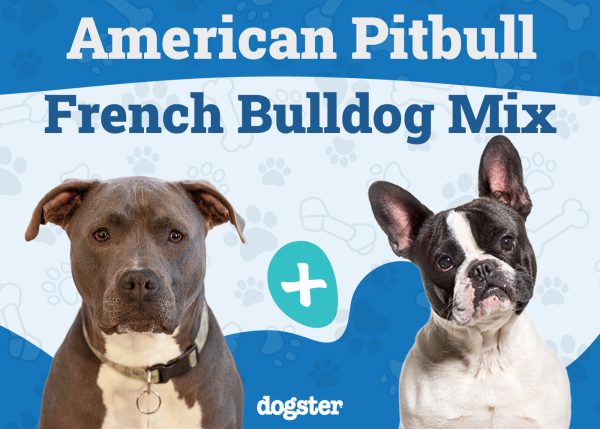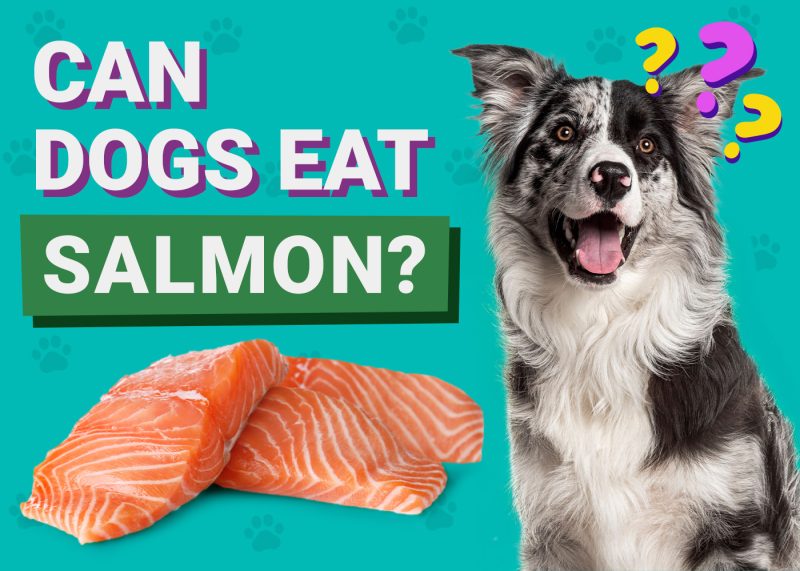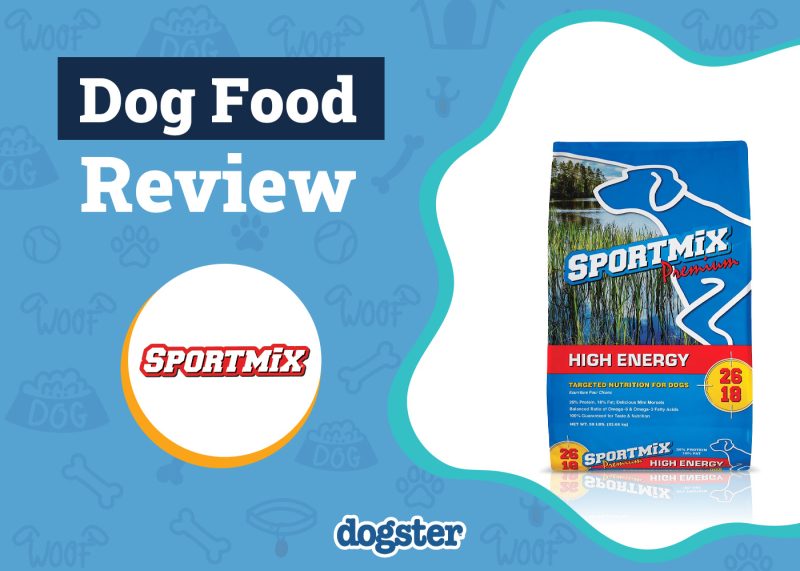We always want the absolute best for our pets, whether it be the most fun new toys or the coziest beds. Nutrition is certainly no exception to this rule. However, if you’ve gone pet food shopping, you know how overwhelming and confusing it can be. Read on to learn more about how to make sense of a dog food label so you can choose the most nutritious food for your pup.

The 8 Tips for Reading Dog Food Labels
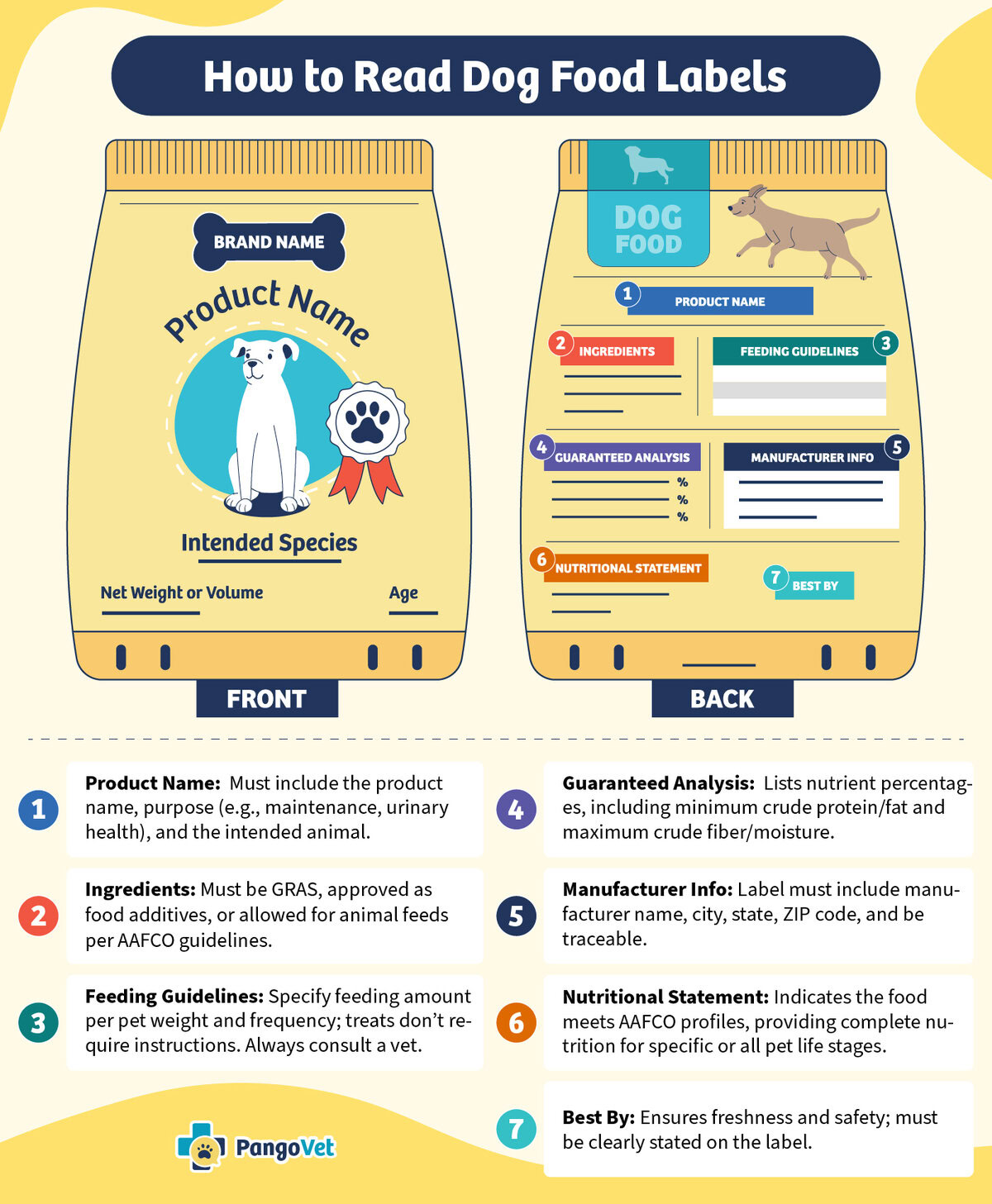
1. Know What a Food Label Consists
According to the AAFCO (Association of American Feed Control Officials), there are eight required label items on every pet food label. These are:
- Brand and product title
- Name of intended species
- Quantity statement
- Guaranteed analysis
- Ingredient statement
- Nutritional adequacy statement
- Feeding directives
- Name and address of manufacturer or distributor
2. Be Aware of “Distributed By” Statements
Pet food labels must include contact information for the manufacturer or distributor. You may notice the phrase “distributed by” or “manufactured for” on some labels. This indicates that the food was manufactured by a third party, not the company selling it. This is important to know because some pet food recalls can be traced back to a specific manufacturer that supplied many other brands.
3. Know Naming Rules

The Food and Drug Administration (FDA) established four rules to help standardize the process of naming a dog food. Understanding these rules can help you determine the food’s true meat content.
The 95% rule requires that at least 95% of the product should be the named ingredient. For example, a food called “Chicken for Dogs” must have at least 95% of its ingredients coming from chicken. This is before cooking and not accounting for any added water. When accounting for added water, the named ingredient must make up 70% of the diet. If there are two proteins in the dog food title, they must make up 95% of the total product together. This rule applies only to ingredients of animal origin listed in the title of the product.
The 25% rule is sometimes also known as the “dinner” rule. It applies to foods with a named meat ingredient making up no less than 25% and no more than 95% of the total product. To qualify for this rule, a descriptive term such as “recipe”, “dinner”, “entree”, “platter” or “formula” needs to be included in the title of the food.
The 3% rule is sometimes known as the “with” rule. Whenever you see a dog food with the word “with” in its title, you’re looking at a food that contains at least 3% of the named product. For example, a formula called “Dog Food with Tuna” could contain only 3% tuna.
The flavor rule allows a food name to include any meat, even if the amount of that meat in the product is very low, so long as the word “flavor” is used afterward. For example, a dog food could be called Tuna Flavored Dog Food could have a very low amount of Tuna, just enough to give the food a flavor.
4. Understand the AAFCO Nutritional Adequacy Statement
The AAFCO Statement is an essential part of pet food labeling in the US and Canada. Unfortunately, food manufacturers don’t always make this statement easy to find. It’s typically typed in small font and printed on the side or back of the packaging.
The nutritional adequacy statement tells consumers what life stage or lifestyle the food has been approved for. The foods with this statement have undergone feeding trials, been thoroughly analyzed in a lab, and were found to meet the nutritional requirements for that specific life stage. Pet food manufacturers formulate recipes for four life stages: gestation/lactation (for pregnant or nursing dogs), growth (for puppies), maintenance (for adults), and all life stages.
Your goal as a dog owner is to ensure your pup is getting the nutrients they need in the quantity they need for their life stage.
5. Know How to Interpret the Feeding Directions
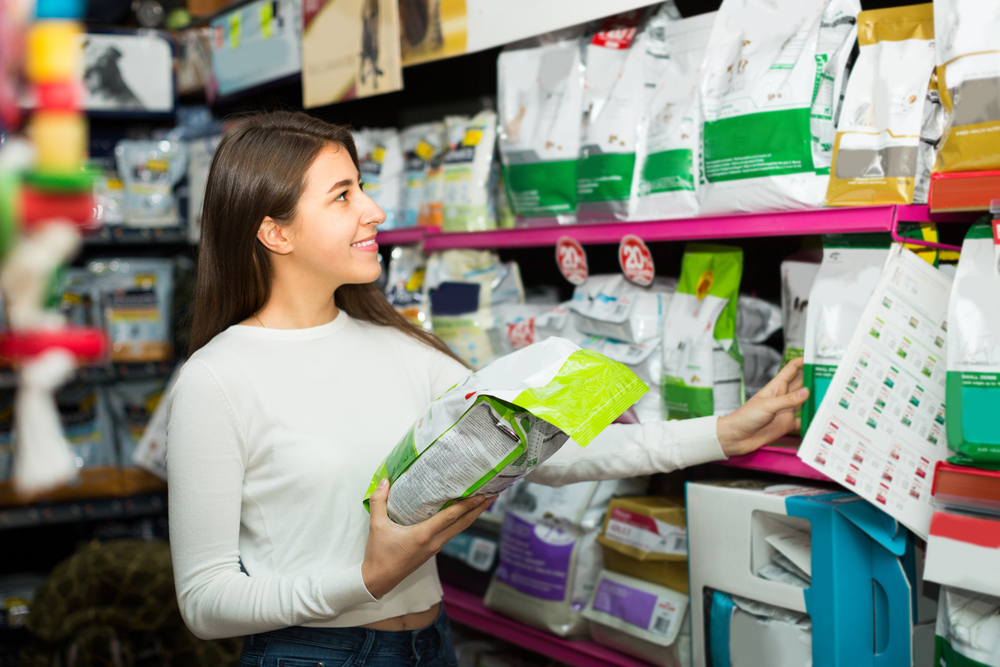
As a responsible dog owner, you play a crucial role in interpreting the feeding instructions on your pet’s food label. These instructions are designed to help you determine how much to feed your dog. However, your pup’s breed, activity level, temperament, and environment can influence their nutritional needs.
Example Interpretation
Let’s say the feeding directions on a dog food bag provide the following chart for an adult dog:
| Dog Weight (lbs) | Daily Amount (cups) |
| 10–20 | 1–1.5 |
| 20–30 | 1.5–2 |
| 30–40 | 2–2.5 |
If you have a 25-pound dog:
- Locate the range: 20–30 lbs
- Daily amount: 1.5–2 cups
- Adjust for activity level: If your dog is very active, you might start with 2 cups. If less active, start with 1.5 cups.
- Divide if feeding twice daily: 2 cups total would be 1 cup per meal.
This exact same interpretation can be applied to wet food as well. For example, replace the “Daily Amount (cups)” with “Daily Amount (ounces)” and you have the suggested feeding directions.
The feeding guidelines on your pup’s food should, therefore, be treated exactly as that—a guideline—and not a hard-and-fast rule. If you’re looking for more personalized suggestions on how much to feed your pup based on various factors, we recommend reaching out to a veterinary team.
If you need to speak with a vet but can't get to one, head over to PangoVet. It's an online service where you can talk to a vet online and get the personalized advice you need for your pet — all at an affordable price!

6. Understand the Descriptive Terminology
Every day, it seems that there are new trends in pet food, making it difficult for owners to know what foods are or are not scientifically backed. Does “organic” mean the same as “natural?” Is “grain-free” dog food better than those that contain grains? What are “novel proteins?” Familiarizing yourself with these buzzwords can help you make an informed decision about your pup’s diet. Let’s take a close look at some of the most common terminologies you’ll find on your dog’s food labels.
Organic. According to the AAFCO, foods labeled “organic” meet production and handling requirements set by the USDA’s National Organic Program (NOP). While organic regulations related to pet foods are still being developed, the NOP says that foods claiming to be organic must meet human food regulations. This means any organic dog food must meet the ingredient, production, and handling requirements of the NOP. “Organic” foods must then contain:
- Zero artificial preservatives, flavoring, or coloring
- Zero antibiotics or growth hormones in the meat or meat by-products
- Little to no fillers
Natural. While the terms “natural” and “organic” are sometimes used interchangeably, there is a small difference between the two. “Organic” essentially refers to the conditions in which the plants or animals used in the formula are grown or raised. Like organic foods, those labeled “natural” simply have no artificial flavoring, coloring, or preservatives.
Grain-free. Grain-free foods have been in the news a lot lately, but there is almost no veterinary science that supports the benefit of such a diet (other than in dogs with grain allergies). In fact, the FDA is examining claims that most diets associated with non-hereditary forms of dilated cardiomyopathy (DCM) contain legume seed ingredients that are high in their ingredient list. While grain-containing foods can also contain these ingredients, it’s extremely common to find them used in grain-free formulas in greater proportions.
Novel proteins. Novel proteins are those that your dog hasn’t been exposed to yet and are typically unique and not found commonly in commercial dog food diets. These proteins can include meat from animals like kangaroos, bison, beavers, rabbits, and other “exotic” animals. It’s hard to know the benefits of such diets as they all have different digestibility and varying nutrient profiles. They can be suitable for some dogs, especially those that have sensitivities to other proteins.
Human-grade food. There is no standardized definition for the term “human-grade” in the dog food space. Pet foods labeled “human-grade” imply that the ingredients in the formula are edible for humans. Since there’s no legal definition for “human grade,” these claims can be misleading and don’t always correlate with “healthy.” However, according to the AAFCO, for pet food to be labeled as such, all ingredients must be edible by humans, and the product needs to be manufactured, stored, packed, and transported in a way that is compliant with human food. Essentially, human-grade pet food has to be made in kitchens licensed to produce food for humans and pets.
The exact amount of calories an individual animal needs to maintain a healthy weight is variable and influenced by many factors including genetics, age, breed, and activity level. This tool is meant to be used only as a guideline for healthy individuals and does not substitute veterinary advice
7. Understand “Guaranteed Analysis”

The AAFCO regulates the nutritional standards for pet foods in the United States. Pet foods that meet these standards will typically display a statement indicating compliance with AAFCO nutritional guidelines, otherwise known as “guaranteed analysis.”
Guaranteed analysis provides specific information about the minimum and maximum levels of certain nutrients present in the food, helping pet owners ensure they are providing their dogs with food that meets their nutritional needs. It also allows for comparison between different brands and types of dog food. The guaranteed analysis is based on either laboratory testing or calculated estimates from the nutrient content of ingredients.
The guaranteed analysis does not provide a complete picture of the food’s quality, digestibility, or overall nutritional content, nor does it reflect how well the nutrients are absorbed and utilized by the dog’s body.
Here’s an overview of how guaranteed analysis works (the term “crude” here means ‘existing in a natural state’):
Key Components of Guaranteed Analysis
- Crude Protein: the minimum percentage of protein in the food.
- Crude Fat: the minimum percentage of fat.
- Crude Fiber: the maximum percentage of fiber.
- Moisture: the maximum percentage of water content in the food. Moisture content affects the food’s shelf life and its concentration of nutrients.
Optional Components
Depending on the manufacturer and the type of dog food, the guaranteed analysis might also include the total mineral content, measured as the residue remaining after the food is burned (crude ash). These nutrients may include vitamins, minerals, omega fatty acids, and specific amino acids like taurine, which are added to meet the nutritional requirements of dogs.
How Guaranteed Analysis is Listed
The guaranteed analysis is listed on the packaging in a format similar to this:
- Crude Protein (min): 25.0%
- Crude Fat (min): 14.0%
- Crude Fiber (max): 4.0%
- Moisture (max): 10.0%
How to Interpret Guaranteed Analysis
“Min” indicates the least amount of the nutrient present, while “max” indicates the most amount. For example, a minimum crude protein of 25% means the food contains at least 25% protein.
Most manufacturers list the nutrients in their formulas on an “as-fed” basis, which includes the moisture content. “Dry matter” refers to values with the moisture removed. If you want to compare foods with varying moisture levels accurately, you’ll need to first convert the nutrients to a “dry matter” basis. Thankfully, there are calculators online that can do this for you.
Removing the water from the food analysis can make a huge difference in the percentages of some nutrients, so we recommend analyzing all potential food options on a dry matter basis to get a better understanding of their nutritional content.
8. Understand the Ingredient List
The ingredient list on your dog’s food label is one of the most critical parts pet owners should pay attention to. Ingredients are to be listed on labels in descending order by weight, so the first few ingredients in your dog’s food are the most plentiful in the formula. However, it is important to understand that the weight used to determine the ingredients’ place on the ingredient list includes moisture content. This can make it difficult to determine which contributes more to the diet on a dry matter basis. Savvy consumers will analyze the top ingredients together rather than putting more priority on the first few ingredients in the list.
It’s also important to be wary of “ingredient splitting,” a deceptive technique some manufacturers use to make it appear as if there’s less of an ingredient in their formulas. For example, “corn” can be split into “ground corn,” “corn meal,” and “corn gluten.”

Final Thoughts
Making sense of pet food labels can be extremely confusing. If you’re not sure what food is best for your pup, we recommend evaluating and comparing different options by accessing their dry matter analyses. If that sounds a bit complicated, a veterinarian will be a fantastic resource for you.
Featured Image Credit: BearFotos, Shutterstock









